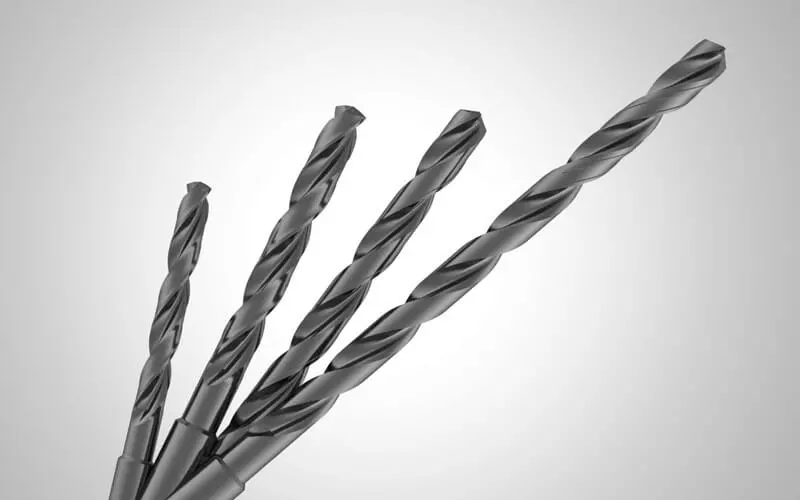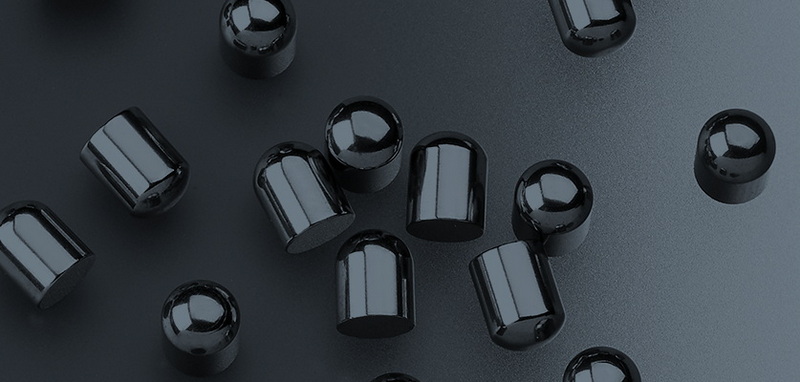Content Menu
● Introduction to Tungsten Carbide
● What is Tungsten Carbide?
● Chemical Properties of Tungsten Carbide
>> Stability and Reactivity
● Reactions with Other Elements
● Applications of Tungsten Carbide
>> 1. Cutting Tools
>> 2. Jewelry
>> 3. Industrial Equipment
>> 4. Aerospace Applications
>> 5. Oil and Gas Industry
● Advantages of Tungsten Carbide
● Limitations of Tungsten Carbide
● Conclusion
● FAQ
>> 1. What is the chemical formula for tungsten carbide?
>> 2. Is tungsten carbide reactive with water?
>> 3. At what temperature does tungsten carbide begin to oxidize?
>> 4. Can tungsten carbide dissolve in acids?
>> 5. What happens when tungsten carbide reacts with fluorine?
● Citations:
Introduction to Tungsten Carbide
Tungsten carbide (WC) is a robust chemical compound made from equal parts of tungsten and carbon atoms. It is renowned for its exceptional hardness, ranking between 9 and 9.5 on the Mohs scale, making it one of the hardest materials available. This article will explore the reactivity of tungsten carbide, its chemical properties, interactions with various substances, and its applications across different industries.

What is Tungsten Carbide?
Tungsten carbide is primarily used in industrial applications due to its remarkable physical properties. It possesses a high melting point of approximately 2,870°C (5,200°F) and a boiling point of around 6,000°C (10,830°F). Due to its density and hardness, it is commonly utilized in cutting tools, abrasives, and jewelry.
Tungsten carbide is often produced through a powder metallurgy process where tungsten and carbon powders are mixed and then heated to form a solid material. This process allows for the creation of complex shapes and sizes that can be tailored to specific applications.
Chemical Properties of Tungsten Carbide
Tungsten carbide exhibits unique chemical properties that influence its reactivity with other substances.
Stability and Reactivity
1. General Stability: Tungsten carbide is generally stable under normal conditions and does not react with air or water at room temperature. However, it can undergo oxidation when heated.
2. Oxidation: Oxidation starts at temperatures around 500–600°C (932–1,112°F). At elevated temperatures in an oxygen-rich environment, tungsten carbide can be converted into tungsten oxide (WO₃). This reaction can be problematic in high-temperature applications where tungsten carbide components are exposed to oxidizing environments.
3. Acid Resistance: Tungsten carbide is insoluble in water, hydrochloric acid, and sulfuric acid but dissolves readily in a mixture of nitric acid and hydrofluoric acid. This property makes it useful in applications where resistance to acidic environments is crucial.
4. Thermal Conductivity: Tungsten carbide has good thermal conductivity compared to other ceramics, which helps dissipate heat during machining processes, reducing wear on cutting tools.
Reactions with Other Elements
- Fluorine: Tungsten carbide reacts with fluorine gas at room temperature to produce tungsten hexafluoride (WF₆). This reaction indicates that while tungsten carbide is stable under many conditions, it can react vigorously with certain halogens.
- Chlorine: At temperatures above 400°C (752°F), tungsten carbide can react with chlorine gas. This reaction leads to the formation of tungsten hexachloride (WCl₆). The ability of tungsten carbide to interact with halogens highlights the importance of controlling environmental conditions during its use.
- Sodium Carbonate: At high temperatures and pressures, tungsten carbide can react with aqueous sodium carbonate to form sodium tungstate. This reaction is often utilized in recycling processes for cemented carbides.
- Hydrogen: Under certain conditions, tungsten carbide can react with hydrogen at elevated temperatures to form tungsten metal and methane gas. This reaction can be significant in processes involving hydrogen atmospheres.
Applications of Tungsten Carbide
Due to its unique properties, tungsten carbide finds applications in various fields:
1. Cutting Tools
Its hardness makes it ideal for manufacturing cutting tools used in machining processes. Tungsten carbide tools are widely used in metalworking industries for drilling, milling, and turning operations due to their ability to maintain sharp edges under extreme conditions.
2. Jewelry
The aesthetic appeal combined with durability makes tungsten carbide popular in jewelry design. Tungsten carbide rings are particularly favored for wedding bands due to their scratch resistance and longevity.
3. Industrial Equipment
Used in mining and drilling equipment due to its wear resistance, tungsten carbide is essential for producing drill bits and other tools that require high durability against abrasive materials.
4. Aerospace Applications
In aerospace engineering, tungsten carbide is utilized for components that must withstand high wear rates while maintaining structural integrity under extreme conditions.
5. Oil and Gas Industry
In the oil and gas sector, tungsten carbide coatings are applied to drilling equipment to enhance performance and extend service life by reducing wear from abrasive materials encountered during drilling operations.

Advantages of Tungsten Carbide
Tungsten carbide offers numerous advantages over other materials:
- High Hardness: Its exceptional hardness allows it to cut through tough materials without significant wear.
- Wear Resistance: The material exhibits excellent resistance against abrasion, making it suitable for harsh working environments.
- Corrosion Resistance: Although not entirely immune to corrosion, tungsten carbide's resistance to many acids makes it advantageous for certain applications.
- Versatility: It can be manufactured into various shapes and sizes for different applications across industries.
Limitations of Tungsten Carbide
Despite its numerous advantages, there are some limitations associated with tungsten carbide:
- Brittleness: While hard, tungsten carbide can be brittle under certain conditions; thus care must be taken during machining or handling.
- Cost: The manufacturing process can be more expensive than other materials due to the cost of raw materials and processing techniques.
- Limited High-Temperature Performance: Although it has a high melting point, prolonged exposure to extreme temperatures can lead to oxidation or degradation over time.
Conclusion
Tungsten carbide's exceptional hardness and stability make it a valuable material across various industries. While it is generally resistant to many chemicals and environmental factors, it does exhibit reactivity under specific conditions—particularly with halogens and at elevated temperatures. Understanding these properties allows for better utilization of tungsten carbide in practical applications.
As technology advances and new methods for processing this remarkable material emerge, the potential uses for tungsten carbide continue to expand. Its combination of durability, versatility, and aesthetic appeal ensures that it will remain an essential component in numerous fields ranging from manufacturing to jewelry design.

FAQ
1. What is the chemical formula for tungsten carbide?
The chemical formula for tungsten carbide is WC.
2. Is tungsten carbide reactive with water?
No, tungsten carbide is insoluble in water and does not react with it.
3. At what temperature does tungsten carbide begin to oxidize?
Tungsten carbide begins to oxidize at temperatures around 500–600°C (932–1,112°F).
4. Can tungsten carbide dissolve in acids?
Yes, tungsten carbide dissolves readily in a mixture of nitric acid and hydrofluoric acid but is resistant to hydrochloric and sulfuric acids.
5. What happens when tungsten carbide reacts with fluorine?
When tungsten carbide reacts with fluorine gas at room temperature, it produces tungsten hexafluoride (WF₆).
Citations:
[1] https://en.wikipedia.org/wiki/Tungsten_carbide
[2] https://www.vedantu.com/chemistry/tungsten-carbide
[3] https://hpvchemicals.oecd.org/ui/handler.axd?id=ed1c76bf-dad9-4baa-8d1b-70fed7f92862
[4] https://www.chemicalbook.com/ChemicalProductProperty_US_CB5174366.aspx
[5] https://www.allied-material.co.jp/en/techinfo/tungsten_carbide/features.html
[6] https://www.carbideprobes.com/wp-content/uploads/2019/07/TungstenCarbideDataSheet.pdf
[7] https://www.refractorymetal.org/tungsten-carbide-uses-properties.html
[8] https://www.imetra.com/tungsten-carbide-material-properties/
[9] https://en.wikipedia.org/wiki/Tungsten
















